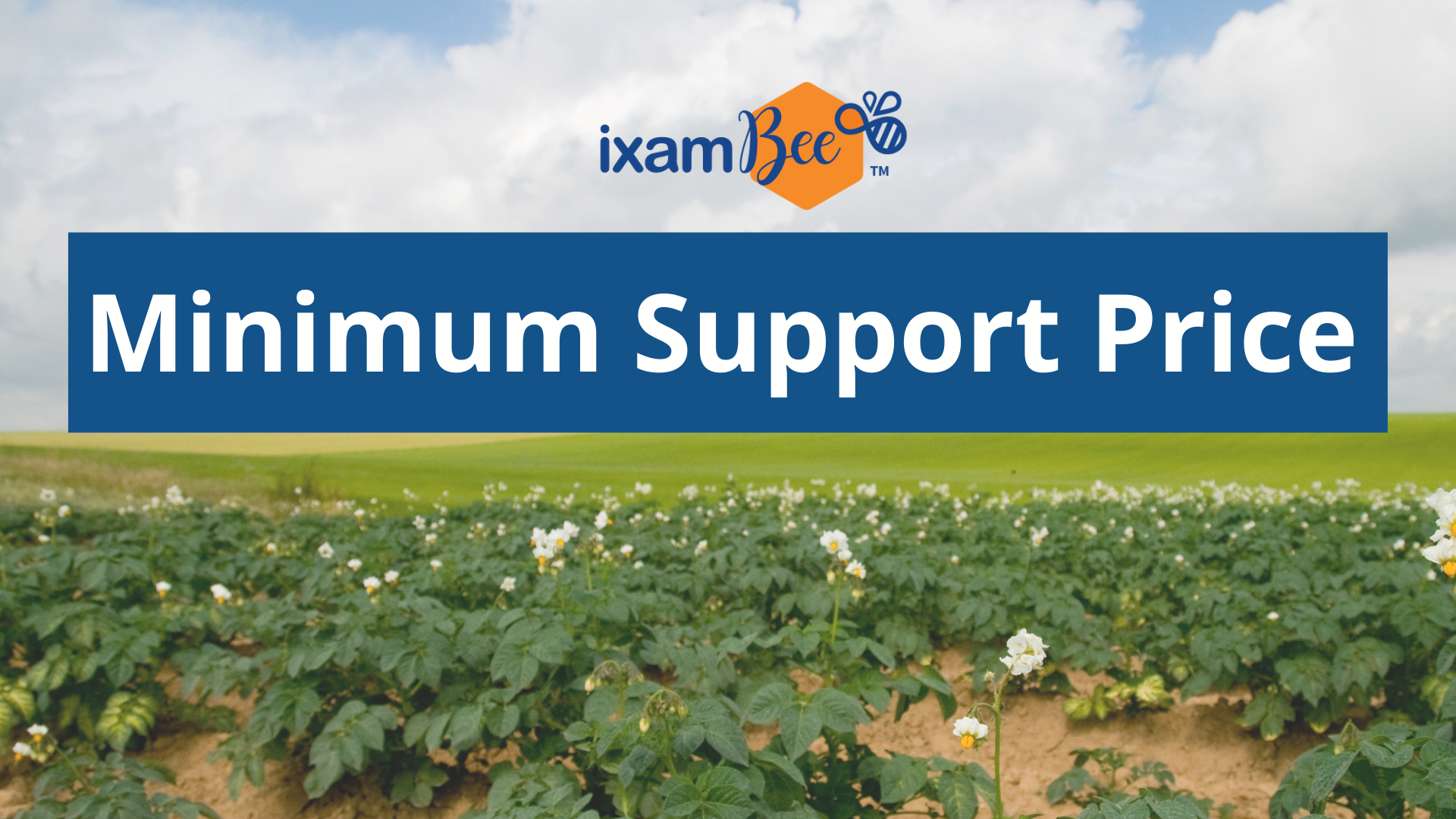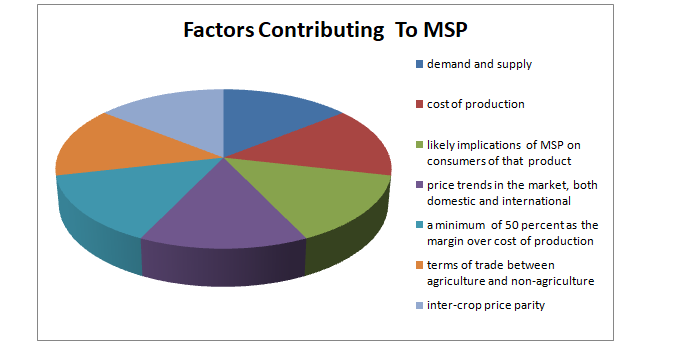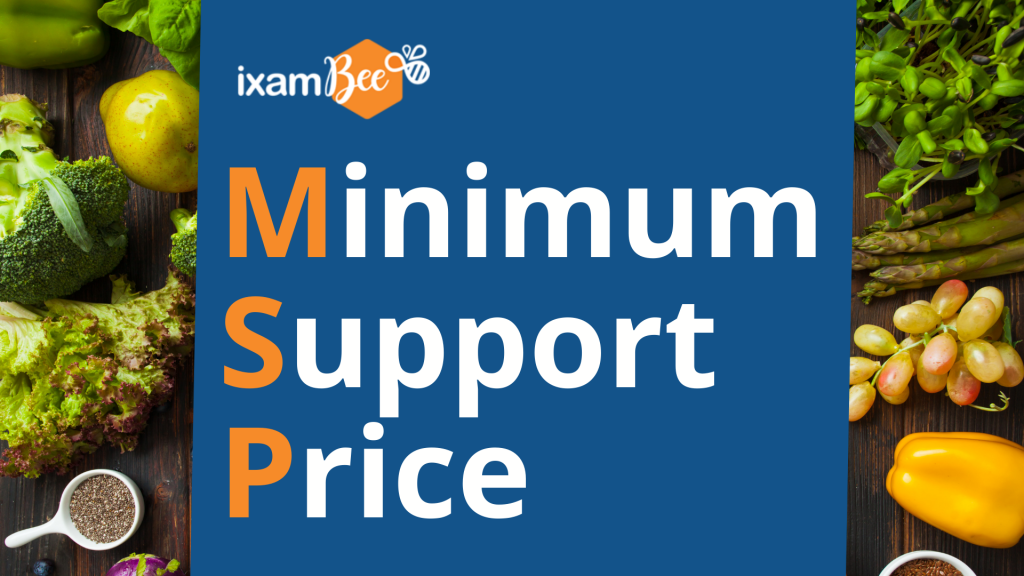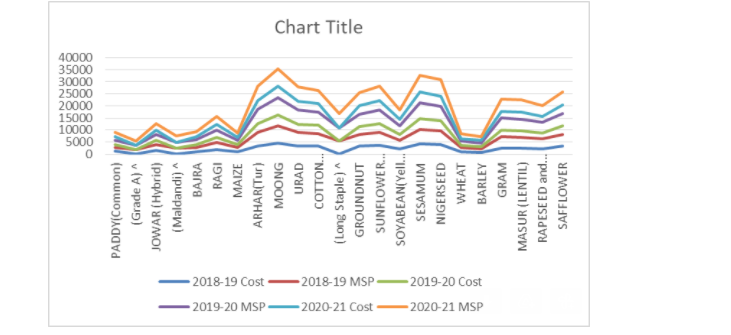The agricultural landscape of India, intricately woven into the fabric of its economy and societal structure, stands at the crossroads of tradition and modernity. At the heart of this agricultural narrative lies the Minimum Support Price (MSP), a policy intervention instituted by the government to provide farmers with a safety net and ensure a stable income. MSP serves as a crucial component of India’s agricultural policies, aiming to shield farmers from the volatility of market fluctuations. However, as with any policy, the efficacy and impact of MSP have sparked debates, giving rise to discussions on its role in shaping market dynamics, fostering economic efficiency, and contributing to the overall welfare of the farming community.
In the realm of Indian laws, MSP is formally defined as the minimum price set by the government to guarantee farmers a remunerative value for their agricultural produce. Administered by the Commission for Agricultural Costs and Prices (CACP), MSP is declared for various crops, playing a pivotal role in supporting farmers and stabilizing their incomes. This blog delves into the multifaceted aspects of MSP, exploring its origins dating back to 1965 when India grappled with a precarious food situation. As the country strives to balance its agricultural heritage with modern challenges, understanding the nuances of MSP becomes imperative for all stakeholders.
India, marked by a tropical climate and where over 80% of the population relies on agriculture, faces the critical question of sustaining this sector. Despite the diminishing contribution of agriculture to the GDP, it remains a primary source of livelihood for a substantial majority. In collaboration with various organizations, the government has been addressing critical challenges in agriculture, from supply chain management to infrastructure support. This blog embarks on an insightful journey, analysing whether MSP, conceived during India’s “ship-to-mouth” era, has elevated the standards of farmers or if it is time to contemplate new norms or enhance existing ones. Join us as we navigate the intricacies of MSP, unraveling its impact on food security, rural livelihoods, and the future of Indian agriculture.

Detailed Understanding of MSP
The Minimum Support Price (MSP) is a crucial policy tool employed by the Government of India (GOI) to provide a safety net for agricultural producers, particularly during market volatility. This mechanism establishes a guaranteed minimum price that the government commits to paying farmers for their food crops, protecting against sudden and drastic declines in market prices. To safeguard the interests of farmers, MSP essentially acts as a floor price, ensuring that agricultural producers receive a remunerative value for their crops, thus mitigating the impact of market uncertainties and safeguarding their livelihoods.
The determination of MSP involves a meticulous process, with the Commission for Agricultural Costs and Prices (CACP) playing a pivotal role. CACP conducts extensive assessments, taking into account various factors such as production costs, market conditions, and the overall economic well-being of farmers. Once the MSP is set, the government commits to purchasing the specified crops from farmers at this predetermined price, providing them financial security and stability.
Beyond its immediate economic implications, MSP holds broader significance in the context of food security and the socio-economic landscape of rural India. By ensuring a minimum income for farmers, MSP reduces income disparities, providing a buffer against poverty in agrarian communities. However, the effectiveness of MSP has been the subject of ongoing debates, with discussions revolving around implementation issues, the choice of crops covered, and the impact on market dynamics. As India grapples with the challenges of a rapidly evolving agricultural sector, the role and evolution of MSP remain central to policy discussions and efforts to sustain the nation’s agrarian backbone.

Minimum Support Price: Role in Indian Agriculture
The Minimum Support Price (MSP) has played a pivotal role in shaping India’s agricultural landscape, providing a crucial safety net for farmers. The announcement of MSP occurs at the onset of each sowing season, a significant event orchestrated by the Cabinet Committee of Economic Affairs. This committee relies on the recommendations of the Commission for Agricultural Costs and Prices (CACP), an authoritative body tasked with evaluating various factors, including production costs, market dynamics, and farmers’ well-being. This collaborative effort ensures that the MSP aligns with the economic realities of agriculture, serving as a reliable benchmark to shield farmers from unpredictable market fluctuations. Over the years, MSP has evolved into a cornerstone of agricultural policies, offering stability and security to farmers nationwide.
Commodities Covered Under MSP
The Minimum Support Price (MSP) stands as a cornerstone in India’s agricultural policy, offering a safety net for farmers. The Cabinet Committee of Economic Affairs, relying on recommendations from the Commission for Agricultural Costs and Prices (CACP), announces MSP twice yearly, marking a critical event in each sowing season.

- Grains and Cereals: MSP stabilizes farmers’ income in cereal cultivation, particularly staple grains like rice and wheat. This proactive inclusion aligns seamlessly with the government’s commitment to ensuring food security and providing reliable support for those contributing to the nation’s essential grain production.
- Pulses: Crucial protein sources, pulses are integral to MSP, offering vital support to farmers dedicated to cultivating these nutritionally significant crops. By including pulses under MSP, the government not only sustains farmers but also contributes to addressing the protein requirements of the population.
- Oilseeds: MSP’s reach extends to oilseeds, a crucial component in the production of cooking oils. This strategic inclusion promotes self-sufficiency in edible oils, ensuring the well-being of farmers who cultivate oilseed crops.
- Fruits and Vegetables: In a noteworthy move, even perishable crops like fruits and vegetables benefit from MSP. This initiative serves as a lifeline for horticulturists, providing stability and support amidst the inherent market uncertainties associated with cultivating these time-sensitive commodities.
- Diverse Crop Portfolio: The comprehensive MSP ambit covers 23 commodities, showcasing a nuanced approach to address farmers’ diverse needs and challenges. This diverse crop portfolio underscores the government’s commitment to supporting various agricultural activities, recognizing each crop’s unique contributions and challenges.
Factors Important for Minimum Support Price
The Commission for Agricultural Costs and Prices (CACP) plays a pivotal role in shaping India’s agricultural policies, particularly in determining the Minimum Support Price (MSP). With a mission to safeguard the interests of farmers, the CACP meticulously considers various factors that influence MSP decisions. They are given below:
- Demand and Supply: Demand and supply dynamics determine the Minimum Support Price (MSP). A thorough analysis of market demand and the availability of a particular crop guides policymakers in setting an MSP that aligns with market forces. Balancing these factors ensures that the MSP reflects the prevailing economic conditions and adequately supports farmers.
- Cost of Production: The cost of production is a fundamental factor influencing MSP. This includes various expenses such as input costs, labor, and technology. A comprehensive understanding of these costs helps set an MSP that ensures farmers cover their expenses, promoting sustainable agricultural practices.
- Implications of MSP on Consumers: MSP benefits farmers but also has implications for consumers. Higher MSP might lead to increased prices for end consumers. Striking a balance that supports farmers without excessively burdening consumers is essential for a sustainable and inclusive agricultural policy.
- Price Trends: Analyzing historical price trends is crucial for determining MSP. It provides insights into the cyclical nature of crop prices, helping policymakers set an MSP that mitigates the impact of market fluctuations on farmers.
- Over 50% Margin of Cost of Production: Ensuring an MSP with a margin over 50% of the production cost is pivotal for farmers’ economic well-being. This margin acts as a safety net, shielding farmers from unforeseen challenges and ensuring a fair return on their investment.
- Trade Terms: Trade terms, both domestic and international, influence MSP. Understanding the global market and trade dynamics ensures that MSP is competitive domestically and aligns with international benchmarks, fostering a sustainable and globally competitive agriculture sector.
- Price Parity Between Crops: Maintaining price parity between crops is essential for a balanced agricultural ecosystem. It prevents disproportionate emphasis on specific crops, encouraging diversification and fostering a well-rounded approach to agricultural sustainability.

Minimum Support Price Importance
Knowing that almost half of the country’s population is still dependent on agriculture, where a farmer’s income revolves around the oddity of weather and local and international price trends, Minimum Support Price/ MSP shields those vulnerable farmers to some extent. Here are some reasons why Minimum Support Price/ MSP is a necessity-
- Price Stabilization Mechanisms: Farmers can be shielded from abrupt declines in commodity market prices by implementing effective price stabilization measures. These mechanisms act as safeguards, providing a safety net that prevents significant financial losses for farmers during periods of market volatility.
- Consumer-Centric Agricultural Output: A responsive agricultural sector ensures that crop production aligns with consumers’ changing needs. This adaptability helps meet consumer demands by fostering a more flexible and consumer-oriented agricultural landscape, enhancing overall market sustainability.
- Incentivizing Short Supply Crops: Targeted incentives can be employed to address shortages in specific food crop production. This approach encourages farmers to focus on cultivating crops experiencing shortfalls, mitigating scarcity, and maintaining a more balanced market.
- Protection from International Price Fluctuations: Farmers are protected from the undesirable effects of price fluctuations caused by international market variations. This safeguard ensures that domestic agricultural prices remain relatively stable, shielding farmers from unpredictable global market forces.
- Promotion of Oilseeds, Pulses, and Coarse Cereals: Initiatives encouraging farmers to expand their cultivation of oilseeds, pulses, and coarse cereals contribute to diversifying agricultural production. This diversification helps improve food security by reducing dependence on a narrow range of crops and enhancing the agricultural sector’s resilience.

- Adoption of Best Technologies and Practices: By incentivizing the adoption of cutting-edge technologies and best farming practices, farmers can efficiently address demand-supply imbalances. This promotes sustainability, productivity, and resilience in agriculture, leading to a more robust and responsive food production system.
- Attaining Food Security and Mitigating Shortages: The overarching goal is to achieve food security by implementing strategies that address key shortages in essential food items. This involves a comprehensive approach that combines price stability, crop diversification, and technological advancements to ensure a steady and reliable food supply for the population.
Prepping with ixambee
In bank exams, a well-rounded preparation includes navigating the nuanced landscape of general awareness. This encompasses various topics, from the intricacies of the Indian economy and finance to historical milestones and pressing socio-economic issues, including agriculture. Among the pivotal subjects, understanding the nuances of the Minimum Support Price (MSP) and its implications is crucial. Details regarding the Minimum Support Price are often important questions for bank exams like the IBPS AFO and NABARD Grade A Exams. Prospective candidates can make use of the NABARD Grade A and IBPS AFO Mock Tests or the NABARD Grade A or the IBPS AFO Online Courses for better understanding of the course.
ixamBee facilitates comprehensive exam readiness through Beepedia, a dedicated space for staying updated on current affairs. Here, aspirants gain insights into relevant topics, including MSP, to ace the general awareness section. IxamBee further fortifies exam preparation with specialized exam pages, offering crucial support, free mock tests, and access to previous year papers. Our array of online courses ensures a holistic approach to learning, equipping students with the knowledge and confidence needed to excel in bank exams. With a blend of cutting-edge resources and expert guidance, ixamBee empowers aspirants to successfully navigate the complexities of competitive exams.
Summing Up
Minimum Support Price insulates the farmers from unfavorable and fluctuating market conditions by assuring them a minimum return on their produce. It needs a thorough revision at the policy level and awareness at the farmer’s level. Farming prompt payment at remunerative rates should be done for Minimum Support Price sustainability. Technology-based value chains should be given more focus. Minimum Support Price announcement before the commencement of the sowing season will enable farmers to plan their cropping. In short, a systematic administrative mechanism incorporating personnel, infrastructure, system, and scientific mechanisms is in demand.
To help you prepare 50% faster for competitive exams, ixamBee provides a free Mock Test Series and all the Current Affairs in English and Current Affairs in Hindi in the BeePedia capsules for GA Preparation. You can also get the latest updates for Bank PO, Bank Clerk, SSC, RBI Grade B, NABARD, and Other Government Jobs.
Also Read
All About Indian States and Union Territories
Important Countries of the World












